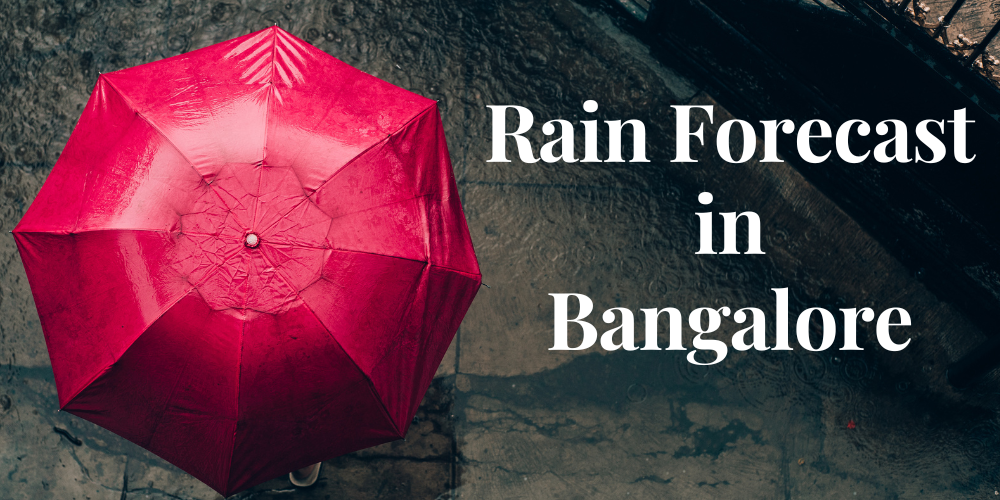
Bangalore, officially known as Bengaluru, is renowned for its pleasant, moderate climate, a reputation largely built on the consistent rainfall in Bangalore that sustains its lush green spaces. For both long-term residents and first-time visitors, understanding the city’s distinct rain patterns is essential for navigating daily life. Consequently, this comprehensive guide delves into every facet of the city’s weather, from detailed Bengaluru monthly rainfall data to the latest rain prediction in Bangalore. Furthermore, it will explore the profound impacts of this rainfall, the science behind its forecasting, and the historical trends shaped by climate change. Therefore, by the end of this guide, you will be thoroughly prepared for whatever the Bangalore sky has in store, equipped with knowledge that is both practical and insightful. Planning a trip? Compare and book Hotel with Agoda or book direct with Hotels.com, Booking.com, Expedia.
Understanding Bangalore's Unique Climate
Bangalore’s weather is undoubtedly a cornerstone of its identity and appeal. The city is geographically positioned on the Deccan Plateau, at an elevation of over 900 meters (3,000 feet) above sea level, which provides a natural buffer against the sweltering heat that characterizes many other parts of India. As a result, this altitude gifts the city with a tropical savanna climate, marked by moderate temperatures for the majority of the year and distinct wet and dry seasons. This exceptional weather has rightfully earned it affectionate titles such as the ‘Garden City of India’ and the ‘Air-Conditioned City’. However, this desirable climate is intricately and delicately balanced with its rainfall patterns, which are dictated by two separate monsoon systems. These patterns are, in effect, both a blessing that nourishes the city and a significant challenge that tests its resilience.
The Two Vital Monsoons
Bangalore’s annual precipitation is not the result of a single, prolonged rainy season but is instead delivered by two distinct monsoons. This dual system is fundamental to the city’s ecology and dictates the rhythm of life, influencing everything from agricultural cycles to urban mobility. Initially, the powerful Southwest Monsoon arrives, followed by the less intense but still significant Northeast Monsoon. Understanding the characteristics and timing of these two climatic events is, therefore, absolutely essential to comprehending the complete picture of Bangalore’s weather and its seasonal temperament.The Southwest Monsoon (June to September)
The Southwest Monsoon is the principal and most crucial rainy season for Bangalore, typically commencing in early June and extending through September. This period is responsible for the largest share of the city’s annual rainfall, characterized by regular, and often heavy, showers that replenish the region’s vital water sources. The consistent downpours fill Bangalore’s extensive network of lakes and significantly recharge groundwater levels, which are critical for the city’s water security. However, this life-giving monsoon also brings challenges; the intense spells of rain can lead to severe traffic congestion and, increasingly, the waterlogging of low-lying areas, making daily commutes a significant hurdle for residents.The Northeast Monsoon (October to December)
Following the retreat of the Southwest Monsoon, the city welcomes the Northeast Monsoon, often referred to as the retreating monsoon. This secondary rainy season, which spans from October to December, provides another bout of rainfall. While generally less intense in volume compared to its predecessor, the Northeast Monsoon can still deliver heavy and impactful downpours, particularly in October and November. These late-season rains are crucial for maintaining the city’s green canopy well into the cooler, drier months. Occasionally, this monsoon can be unusually active, leading to significant flooding events, as was witnessed in November 2015 when the city recorded exceptionally high rainfall.A Deep Dive into Bengaluru Monthly Rainfall Data
To truly appreciate the nuances of rainfall in Bangalore, a month-by-month analysis is indispensable. The city’s official average annual rainfall is approximately 970 mm, but this precipitation is far from evenly distributed across the year. In fact, some months are virtually bone-dry, while others are inundated with torrential downpours. This detailed breakdown reveals the city’s climatic pulse, offering a clearer picture of what to expect in each distinct season and highlighting the dramatic shifts in weather patterns that occur. Historical data, meticulously collected by organizations like the India Meteorological Department (IMD), provides invaluable insights into these patterns.
Pre-Monsoon Showers (March to May)
The period from March to May serves as a critical prelude to the main monsoon season, characterized by a gradual escalation in rainfall activity. These months often experience intense, short-lived thunderstorms, famously known as ‘mango showers,’ which are vital for the flowering of mango trees and other local agriculture. April and May, in particular, can see significant pre-monsoon activity. For instance, some years have recorded unusually severe spells during this time, with May 2023 breaking records for rainfall intensity. The average precipitation in April is highly variable but has shown an increasing trend over the years. These showers, while sometimes disruptive, bring the first relief from the escalating summer heat.Peak Monsoon Months (June to October)
The heart of Bangalore’s rainy season extends from June through October, a period when both the Southwest and Northeast monsoons are active. The wettest months are typically September and October, with September receiving an average of over 200 mm of rain. These months are defined by high humidity, predominantly overcast skies, and frequent, prolonged rainfall. While this sustained precipitation is absolutely essential for replenishing the city’s water supply, managed by the Bangalore Water Supply and Sewerage Board (BWSSB), it concurrently brings forth significant urban challenges, most notably severe flooding and infrastructure strain.Post-Monsoon and Winter (November to February)
After the relentless intensity of the twin monsoons, the period from November to February offers a much drier and cooler respite. November still experiences some lingering showers from the retreating Northeast Monsoon, and this month’s rainfall can be highly unpredictable. However, by December, the rains almost completely subside, ushering in the driest phase of the year. January and February are the driest months, with January receiving, on average, a minimal amount of rainfall, often less than 5 mm. This dry, pleasant spell is widely considered the most agreeable time to be in the city, with clear skies and comfortable temperatures.Rain Prediction in Bangalore: What to Expect
For anyone living in or planning a trip to Bangalore, access to an accurate rain prediction in Bangalore is incredibly valuable for daily planning. Fortunately, a combination of modern technology and dedicated meteorological agencies provides increasingly reliable forecasts. The primary authority for weather prediction in the region is the India Meteorological Department (IMD), which issues regular updates and warnings. In addition, the Karnataka State Natural Disaster Monitoring Centre (KSNDMC) plays a crucial local role, providing granular, real-time data and forecasts that are vital for disaster management, especially during periods of extreme rainfall.
How Rainfall is Forecasted
Forecasting precipitation in a dynamic environment like Bangalore involves sophisticated scientific methodologies. Agencies like the IMD and KSNDMC utilize a network of Doppler weather radars, high-resolution satellite imagery from sources like INSAT, and numerous automated weather stations to gather real-time atmospheric data. This information, which includes wind patterns, temperature gradients, and moisture levels, is then fed into powerful Numerical Weather Prediction (NWP) models. These models simulate atmospheric conditions to predict the likelihood, intensity, and duration of rainfall. Based on these predictions, the agencies issue colour-coded alerts to the public. For example, a ‘Yellow’ alert serves as a notice to ‘Be Aware’ of potential disruptions, an ‘Orange’ alert means ‘Be Prepared’ for potentially severe weather, and a ‘Red’ alert signals that action is required due to the high probability of extremely heavy rainfall that could threaten life and property.Current and Future Rain Predictions
An analysis of recent trends and long-term climate models indicates that rainfall patterns in Bangalore are undergoing a significant transformation. Studies, including those from the KSNDMC, have shown an increase in the average annual rainfall over the last century. Furthermore, there is a clear and concerning trend towards more frequent extreme rainfall events. This means that while the total volume of rain may be increasing, it is often concentrated in shorter, more intense, and destructive bursts. This shift has profound implications for the city’s aging infrastructure, its capacity for effective water management, and the overall risk of urban flooding. Climate change is a significant driver of this increased variability, leading to both more intense wet spells and longer dry spells.The Impact of Heavy Rainfall in Bangalore
The rainfall in Bangalore wields a powerful, dual impact on the city. On one hand, it is the life-giving source that replenishes its water reserves and nourishes its green landscapes. On the other hand, it has increasingly become a cause of widespread disruption and distress. Consequently, the effects of heavy rain are felt across every aspect of urban life, from the natural environment and public health to the local economy and daily commutes.
The Good: Replenishing Vital Water Sources
On the positive side, the monsoon rains are absolutely essential for the sustainability of Bangalore’s water sources. The city’s iconic network of lakes, a defining feature of its historical landscape, is entirely dependent on this annual deluge for replenishment. Moreover, the rain recharges the groundwater aquifers, a critical source of water for a significant portion of the population, supplementing the supply from the Cauvery River provided by the BWSSB. A healthy monsoon season can secure the city’s water supply for the ensuing dry months. The lush, vibrant greenery that earned Bangalore its ‘Garden City’ moniker is also a direct and beautiful consequence of this consistent and generous rainfall.The Bad: The Crisis of Urban Flooding
However, the blessing of rain frequently turns into a curse. Urban flooding has emerged as one of Bangalore’s most pressing and recurrent challenges. This problem is not merely a result of heavy rainfall but is deeply rooted in decades of rapid, and often unplanned, urbanization. The relentless expansion of the city has led to the widespread encroachment of lakebeds and the critical network of stormwater drains, known as rajakaluves. This has severely compromised the city’s natural drainage capacity. As a result, even moderate to heavy rainfall can trigger extensive waterlogging, bringing vehicular traffic to a complete standstill and inundating homes and businesses. These floods not only cause immense disruption to daily life but also inflict significant economic losses, damage public infrastructure, and pose serious risks to public health and safety.Historical Rainfall Trends and Climate Change
A thorough analysis of historical rainfall data reveals startling and significant trends in Bangalore’s evolving climate. Over the course of the last century, there has been a clear and measurable increase in the city’s average annual rainfall. Data from the early 1900s indicates an annual average of around 900 mm, a figure that has now climbed to over 1200 mm in recent years, with some years recording totals close to 2000 mm. This increase, however, is not spread evenly throughout the year. Instead, the pre-monsoon months of April and May, along with the post-monsoon months of October and November, have exhibited the most significant rise in precipitation. This shifting pattern, as highlighted in studies by institutions like the Indian Institute of Science (IISc) and KSNDMC, points towards a future of more intense, erratic, and unpredictable rainfall—a trend that is consistent with broader global climate change models. The increasing frequency of extreme weather events presents a formidable challenge for the city’s future planning and resilience strategies.
Conclusion
The rainfall in Bangalore is an intrinsic and defining element of the city’s character and ecological health.
It is the lifeblood that sustains its famous green canopy and the primary font for its water security. However, as the city has burgeoned at an exponential rate, the challenges tethered to this rainfall have become increasingly severe and pronounced. Urban flooding, a direct and devastating consequence of rapid, often unregulated development and the degradation of natural drainage systems, stands as a critical issue demanding urgent and intelligent solutions. By fostering a deeper understanding of the city’s rainfall patterns—from the detailed monthly data to the overarching long-term trends shaped by climate change—and by adopting necessary precautions, residents and visitors can more adeptly navigate the complexities of Bangalore’s climate.
Ultimately, the path forward requires a paradigm shift towards sustainable, ecologically-sensitive urban planning. This is the only way to ensure that the rain, for generations to come, remains a cherished boon for the city and not a recurring bane.
It is the lifeblood that sustains its famous green canopy and the primary font for its water security. However, as the city has burgeoned at an exponential rate, the challenges tethered to this rainfall have become increasingly severe and pronounced. Urban flooding, a direct and devastating consequence of rapid, often unregulated development and the degradation of natural drainage systems, stands as a critical issue demanding urgent and intelligent solutions. By fostering a deeper understanding of the city’s rainfall patterns—from the detailed monthly data to the overarching long-term trends shaped by climate change—and by adopting necessary precautions, residents and visitors can more adeptly navigate the complexities of Bangalore’s climate.
Ultimately, the path forward requires a paradigm shift towards sustainable, ecologically-sensitive urban planning. This is the only way to ensure that the rain, for generations to come, remains a cherished boon for the city and not a recurring bane.
Frequently Asked Questions (FAQ) about Rainfall in Bangalore
What is the rainiest month in Bangalore?
September and October are typically the rainiest months in Bangalore. September receives the peak rainfall from the Southwest Monsoon, while October is heavily influenced by the Northeast Monsoon, resulting in both months recording the highest average precipitation.When does the monsoon start in Bangalore?
Bangalore is uniquely influenced by two monsoon seasons. The primary Southwest Monsoon usually begins in the first week of June and lasts until September. This is followed by the Northeast or retreating monsoon, which affects the city from October through December.Is it safe to visit Bangalore during the monsoon?
Yes, it is generally safe to visit Bangalore during the monsoon, and many feel the city’s ‘Garden City’ charm is at its most vibrant during this time. However, visitors should be well-prepared for frequent and sometimes heavy showers, and anticipate potential traffic disruptions and waterlogging in certain areas.How much rain does Bangalore get in a year?
Bangalore’s long-term average annual rainfall is about 970 mm. However, in recent decades, this average has been increasing, with analysis showing a new average closer to 1,200 mm and some recent years recording totals well over that.Why does Bangalore flood so easily?
Bangalore’s susceptibility to flooding is a complex issue stemming primarily from rapid and often unplanned urbanization. Key factors include the widespread encroachment and blockage of the natural stormwater drain network (rajakaluves), the filling in of lakes and wetlands that acted as natural flood buffers, and a dramatic increase in paved, impermeable surfaces which leads to higher and faster surface runoff, overwhelming the city’s compromised drainage capacity during heavy rainfall. Trending Blogs:

Hotels in Bangalore: Your Ultimate Guide to the Best Stays
Searching for good hotels in Bangalore? Whether you’re visiting the city for work or leisure, there’s a wide variety of stays available—from luxury to budget

“Best Cafes in Bangalore – Top 5 You Must Visit”
Welcome to the Garden City, a place where the aroma of freshly brewed coffee is always in the air. Bangalore, a bustling hub of technology

Places to Visit in Bangalore – A Complete Travel Guide
Bangalore, often referred to as the “Garden City of India,” offers a unique mix of nature, history, and modern attractions. Whether you’re a nature lover,








